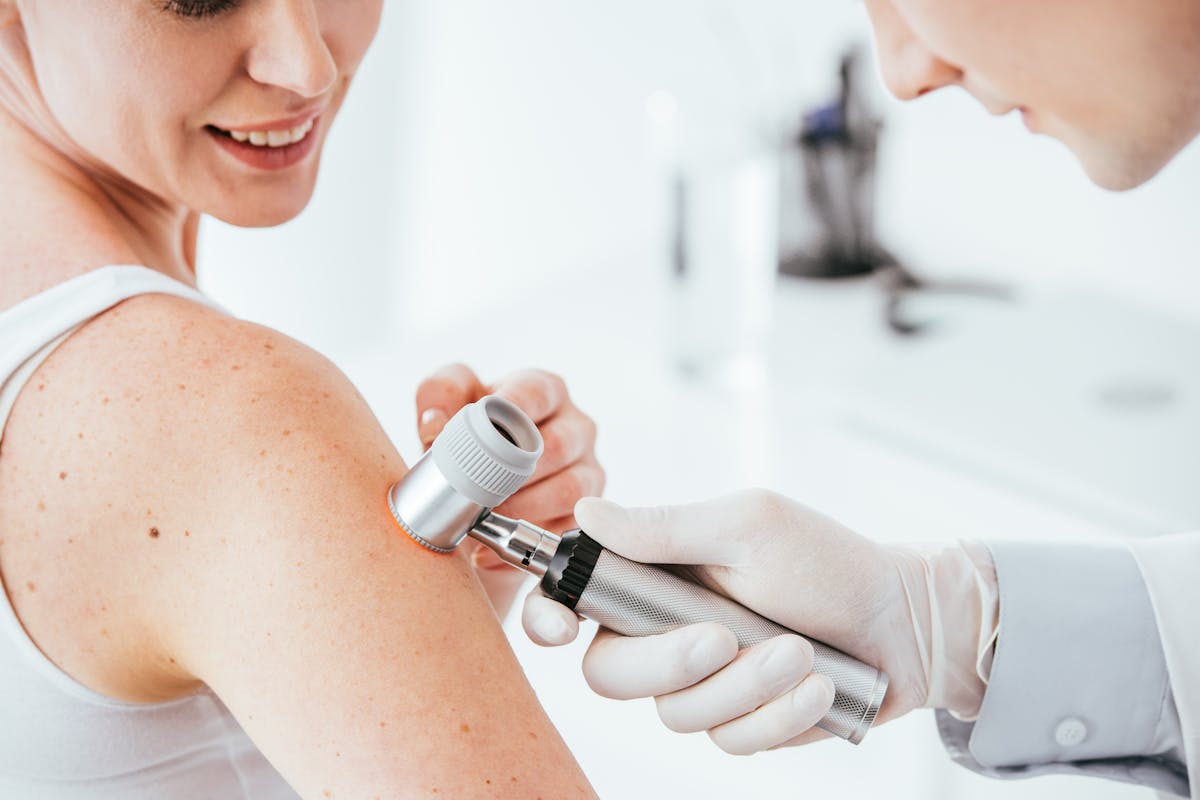Can Melanoma Be Prevented?

Would you be surprised to learn that skin cancer is the most common type of cancer in the United States? Experts say one in five Americans will be diagnosed with some form of skin cancer by the time they turn 70. Fortunately, most forms of skin cancer are treatable if caught early. There is one type, however, that is especially dangerous: melanoma.
Deaths from melanoma are highest among older adults. White men over the age of 55 make up the majority of melanoma diagnoses. Just living longer exposes you to more sun damage, which, in turn, can lead to melanoma.
In honor of Melanoma Awareness Month in May and Melanoma Monday, which occurs on May 7 this year, we’re sharing more information on the risk factors for this deadly form of skin cancer.
8 Risk Factors for Melanoma
Though researchers aren’t sure why some people develop melanoma and others don’t, they believe some personal traits and behaviors might put people at greater risk:
- Age and gender: Age and sex impact your odds of developing melanoma. The older you are, the more likely you are to develop melanoma. Before age 50, women are at higher risk. After 50, however, that flips and men face the greatest risk.
- Family history: Ten percent of adults diagnosed with melanoma have a first-degree relative—a parent, child, or sibling—who has also been diagnosed with the disease. If your family has a history of melanoma, it’s important to share that information with your primary care physician.
- UV radiation exposure: While the use of tanning beds has fallen by almost one-third over the last decade, they are still popular. Young white women between the ages of 18 and 21 are the largest consumers. Because the beds emit UV radiation, they put users at higher risk for melanoma.
- Complexion: Skin tone is another factor that increases a person’s risk for melanoma. Fair-skinned people usually sunburn more easily, putting them in a high-risk category. Caucasians with blond or red hair and blue or green eyes are especially vulnerable.
- Location: When it comes to the chance of developing melanoma, where you live matters. People who reside close to the equator or at high elevation are at greater risk. Researchers believe it is because they are regularly exposed to larger doses of the sun’s UV rays.
- Moles: While most moles don’t turn into melanoma, some do. The more moles you have, the higher your risk for this serious form of skin cancer. If you don’t already have an annual skin check by a dermatologist, ask your primary care doctor for a referral to one.
- Sunburns: Experiencing one or more blistering sunburns at any age can also increase a person’s odds of developing melanoma. While most skin damage happens during childhood, it’s important not to get complacent and think what you do during adulthood doesn’t matter.
- Weakened immune system: Some chronic health conditions, as well as cancer treatments, can weaken a person’s immune system. Research seems to indicate a person’s risk for melanoma rises when their immune system is compromised.
As we head into summer, it’s important to review these risk factors with loved ones of all ages.
Dehydration and Summer Safety
Another safety issue to be aware of this summer is the need to monitor hydration. While it can occur any time of year, dehydration happens most often in the summer. Summer Dehydration and Seniors: What Adult Children Should Know is a helpful article you can read to learn more.